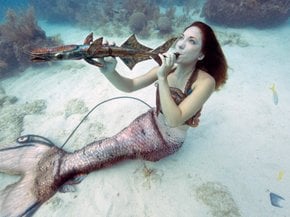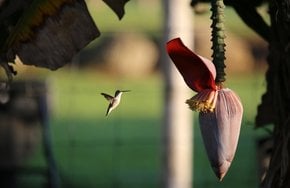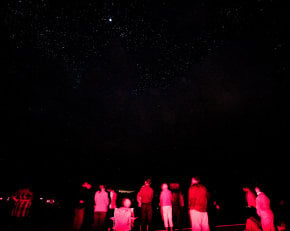Mullet Migration in Florida 2026
It might be amusing to watch migrating mullets jumping above the water's surface, however, they don't do it out of amusement, but to escape chasing predators
Best time: late September–early October
The annual mullet migration in Florida is nothing short of epic! This spectacular natural event draws attention to Florida's coastal regions every fall. Visitors and locals alike are often astonished by the sight of vast schools of mullet, stretching as far as the eye can see, leaping out of the water as they journey southward. This natural phenomenon is driven by the instinctual need of these fish to reach their winter breeding grounds in the Gulf Stream. As they travel, the mullet face numerous obstacles and predators, making their migration a dramatic and awe-inspiring spectacle.
What to Observe
During the mullet migration, observers can witness the breathtaking sight of thousands of fish moving in unison along Florida's coastline. The sheer size of the schools, which can cover areas the size of a football field, is impressive. The mullets are often seen leaping out of the water, creating a dynamic and lively scene. This migration also attracts a variety of marine predators, such as tarpon, sharks, and snook, which hunt the mullet as they swim by. Additionally, bird species like pelicans and ospreys can be seen diving into the water to catch their prey.
Timing and Conditions
The timing of the mullet migration can vary slightly each year, depending on environmental conditions such as water temperature and tides. Typically, the migration occurs between late September and early October. However, it is advised to check local forecasts for more precise timing, as factors like sudden weather changes or storms can shift the migration window. Websites like Florida Fish and Wildlife Conservation Commission (FWC) offer updates and forecasts to help visitors plan their trips accordingly.
Tracker
For anglers looking to maximize their chances during the mullet run, tools like FishTrack can be invaluable. This app provides saltwater anglers with detailed resources to find and catch more fish, offering Cloudfree Sea Surface Temperature (SST) charts and high-definition global satellite imagery. This includes water temperature charts, chlorophyll levels, water color, currents, tides, moon phases, and marine weather forecasts—all in one app. FishTrack also allows users to mark ‘hot spots’ and record GPS locations of temperature breaks and color barriers. By using FishTrack, anglers can better anticipate the movements of mullet and the predators that follow them, improving their chances of a successful fishing trip.
Best Locations to View the Migration
The best locations to observe the mullet migration include offshore areas around Port Canaveral and Sebastian Inlet. These spots are known for providing excellent views of the schools as they move southward. Other less crowded but equally rewarding locations include Mosquito Lagoon and the Indian River Lagoon. Each of these areas offers unique viewing experiences with varying degrees of accessibility and crowd levels. These locations are public beaches with no entry fees.
Fishing Regulations in Florida
For those interested in fishing during the mullet migration, it's important to be aware of Florida's fishing regulations. A fishing license is required for most types of fishing, and regulations vary depending on the species targeted. The Florida Fish and Wildlife Conservation Commission (FWC) sets specific limits on the number of fish that can be caught per person per day, as well as gear restrictions. For mullet, there is no minimum size limit, but the daily bag limit is 50 fish per person from September 1 to January 31. It's also important to note that some areas may have additional restrictions, so checking local regulations before heading out is recommended.
Fishing License
In Florida, you need a freshwater license for freshwater fish and a saltwater license for saltwater fish. If fishing in areas where fresh and saltwater mix, you must have the appropriate license for the species you're targeting. Annual licenses expire one year from the issue date. Licenses can be purchased online, at tax collectors' offices, or various retailers. Youth under 16 and residents 65+ are exempt from license requirements but must still follow all fishing regulations. The fees for recreational fishing licenses vary, with a resident freshwater or saltwater fishing license costing $17 annually and a non-resident license ranging from $17 to $47 annually, depending on the duration.
Target Species During the Mullet Run
The fall mullet run is more than just a migration; it's a forage feast that attracts a wide array of predator species, providing prime opportunities for anglers. While mullets are the main attraction, species like tarpon, snook, and jack crevalle are drawn to the schools as they migrate through coastal waters. These predators follow the mullet in a high-stakes hunt, offering anglers the chance to catch some of the largest and most sought-after gamefish of the year. Whether it's the explosive strikes of a tarpon, the powerful runs of a snook, or the chaotic feeding frenzies of jack crevalle, the mullet run presents an exciting challenge for those who know where and when to fish.
Tips for the Florida Mullet Run
Fishing the Florida mullet run is an exhilarating experience, especially when coastal game fish are on the hunt. To increase your chances of success, focus on key ambush points like seawalls and rocky shorelines where predatory fish trap migrating mullet. Early morning topwater plugs work well along these structures, but live bait can also be effective throughout the day. If you're targeting larger fish, consider adding a jighead to your setup to reach deeper waters where the biggest catches often lurk. As the sun sets, night fishing near dock lights and bridges can yield impressive results, especially for tarpon. Remember, the key is patience, follow the mullet—where they go, the predators will be right behind them.
Organized Tours and Fishing Opportunities
Several local tour operators offer guided tours during the mullet migration season. These tours typically include boat rides that take visitors closer to the action, providing a more immersive experience. Some tours also combine the viewing experience with fishing trips, where participants can try their hand at catching some of the predators following the mullet schools. Prices for these tours can vary, with basic packages starting around $50 per person, while more comprehensive tours, including fishing gear and refreshments, may cost up to $200.
Mullet: A Brief Overview
The striped mullet (Mugil cephalus) is the most common species seen during the migration. Recognizable by their bluish-gray or greenish backs, silvery sides, and blunt noses, these fish typically grow up to three pounds. Mullet are known for their leaping behavior, which is often thought to be a way to avoid predators or remove parasites. They feed on algae and small marine organisms and play a crucial role in the coastal ecosystem by helping to maintain water quality.
Nearby Attractions and Accommodation
The areas surrounding these viewing spots are well-equipped with tourist facilities, including restaurants, hotels, and campgrounds. For instance, visitors to Sebastian Inlet can explore the nearby Sebastian Inlet State Park, which offers camping facilities, picnic areas, and hiking trails. This makes it an excellent destination for those looking to extend their stay and enjoy other outdoor activities. The park also provides opportunities for surfing, fishing, and birdwatching, ensuring there's something for everyone.


















































































